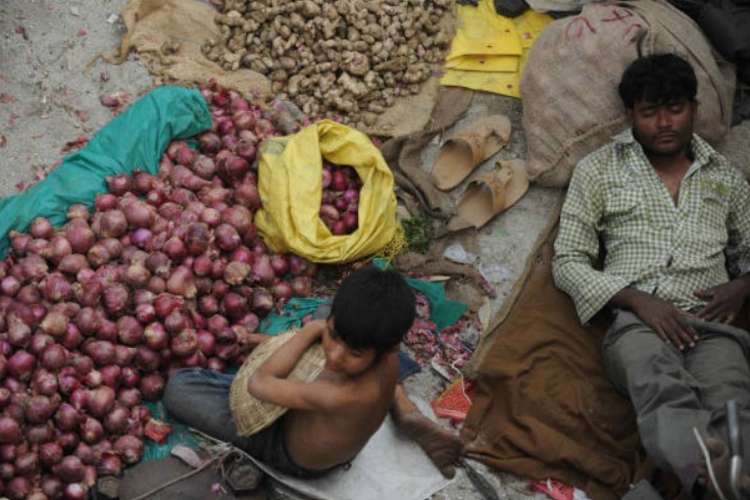The government is revising the base year of the Consumer Price Index for Agricultural Labourers and Rural Labourers (CPI-AL/RL) for the first time in nearly four decades. This update seeks to reflect more accurately the inflation experienced by rural and agricultural workers, whose spending patterns have evolved considerably since the current base year of 1986-87.
One of the most tangible outcomes of this revision will be more realistic and potentially higher wage rates under the Mahatma Gandhi National Rural Employment Guarantee Act (MGNREGA), making rural employment schemes more remunerative.
READ | India looks to plug loopholes in free trade agreements
The government is also preparing to revise the base year of the Consumer Price Index for Industrial Workers (CPI-IW)—the third major price index that primarily tracks inflation in urban areas. The current base year, 2016, was adopted in September 2020.
What Is CPI-AL/RL and why does It matter
The CPI-AL and CPI-RL are critical tools used to determine dearness allowance and wages for millions of workers in central and state governments, public sector undertakings, and private establishments. They also guide the calculation of minimum wages for agricultural and rural labourers, whether engaged in farm or non-farm activities.
These indices are particularly significant for schemes like MGNREGA, where wage revisions are directly linked to CPI-AL figures. With food forming the bulk of expenses in rural households, CPI-AL places a heavy emphasis on essentials. However, with a base year dating back to 1986-87, the index no longer captures contemporary consumption patterns, leaving a gap in the assessment of real rural inflation and wage adequacy.
The government has acknowledged that the existing indices are outdated and incapable of capturing the shifts in rural consumption trends. India has seen significant socio-economic changes over the past four decades—including greater access to technology, health, and education services—all of which have reshaped household spending.
Towards wider and more accurate coverage
Currently, CPI-AL and CPI-RL are used by 20 states and Union Territories. The planned revision is expected to bring all states and UTs under its purview. States that lack their own indices typically rely on those of neighbouring states to calculate minimum wages and MGNREGA payouts, leading to discrepancies.
To oversee the revision, an expert committee headed by Asit Kumar Sadhu, a member of the National Statistical Commission, has been constituted. The committee will include representatives from the ministries of consumer affairs and statistics, alongside independent experts. The latest Household Consumption Expenditure Survey will serve as a foundational input for the revision process.
How inflation is measured
In India, inflation is measured using various Consumer Price Indices that track changes in the prices of a fixed basket of goods and services consumed by different population groups. These include CPI-AL, CPI-RL, and CPI-IW. While the Wholesale Price Index (WPI) exists, Consumer Price Indices are more relevant for measuring retail inflation faced by households.
In the current CPI-AL, food items carry a weight of 72.9%, while the CPI-RL assigns them a 70.4% weight. Expenditures on medical care constitute 4.38% in CPI-AL and 4.23% in CPI-RL, while education, recreation, and amusement account for less than 1% in both—highlighting the skew towards basic necessities. Prices are collected monthly from markets across India to reflect regional variations in both rural and urban settings.
Ideally, the base year of such indices should be revised every decade to remain relevant. For instance, mobile phones and internet services were practically non-existent in the 1986-87 consumption basket, yet they are essential today.
Bridging the urban-rural divide
Experts have long flagged the urban bias in India’s inflation metrics. Arun Kumar, a former professor at Jawaharlal Nehru University, pointed out that headline retail inflation is largely based on urban-centric indices and fails to capture rural realities. Unlike their urban counterparts, low-income rural households spend a disproportionate amount on food, making CPI-AL and CPI-RL vital for tracking their economic well-being.
Accurate inflation measurement is essential not only for wage-setting but also for macroeconomic management. The Reserve Bank of India relies on inflation data to guide interest rate decisions. If inflation is underestimated, wages may not keep pace with rising costs, leaving rural workers undercompensated and eroding the effectiveness of welfare programmes.
Revising these indices is a complex undertaking, especially in a country as diverse as India. Consumption patterns vary widely across regions—what holds true in the Northeast may not apply to the South. Ensuring granular, region-specific data collection will be key to creating indices that truly reflect the economic conditions of India’s rural workforce.
While the process is challenging, the implications are far-reaching. Updated indices will not only lead to fairer wages and more effective welfare schemes like MGNREGA, but also help policymakers craft better-targeted monetary and fiscal policies. For a country aiming for inclusive growth, the task is not just important—it is imperative.

